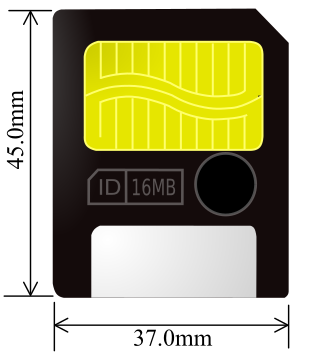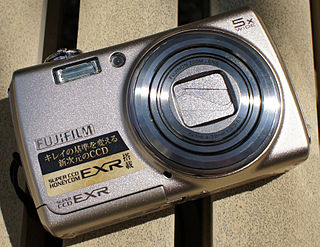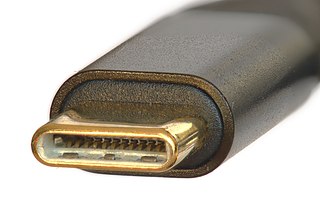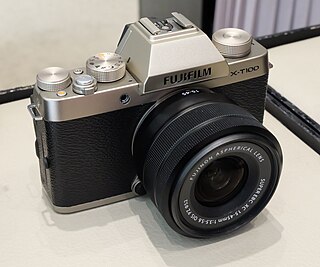Sample pictures
- Garden spider, taken with FinePix A345
- Indoor photo taken with FinePix A345
| Overview | |
|---|---|
| Type | Point-and-shoot |
| Lens | |
| Lens | Fujinon 3x optical zoom lens |
| Sensor/medium | |
| Sensor | CCD |
| Maximum resolution | 2592 x 1944 |
| Film speed | 64 - 400 |
| Storage media | XD-Picture Card (xD) |
| Focusing | |
| Focus modes | none |
| Focus areas | Unknown |
| Focus bracketing | Unknown |
| Exposure/metering | |
| Exposure modes | Portrait, landscape, sports, night, auto, and manual modes |
| Exposure metering | Unknown |
| Metering modes | Unknown |
| Flash | |
| Flash | Auto flash |
| Flash bracketing | Unknown |
| Shutter | |
| Shutter | Unknown |
| Shutter speed range | 2 to 1/2,000 sec. |
| Continuous shooting | yes (depending on picture quality) [1] |
| Viewfinder | |
| Viewfinder | Real image optical (appx. 75% coverage) and Electronic |
| Image processing | |
| White balance | yes |
| WB bracketing | Unknown |
| General | |
| LCD screen | 1.8" Amorphous silicon TFT LCD (approx. 115,000 pixels / 90% coverage) |
| Battery | Two AA batteries |
| Optional battery packs | Two 2500 mAh NiMH AA rechargeable batteries [2] |
| Weight | 132g, without batteries and media |
The Fujifilm FinePix A345 and A350 are entry-level digital point-and-shoot cameras. They feature 3x optical zoom, a resolution of 4.1 and 5.2 megapixels respectively, and 320x240 (at 15fps) movie recording with sound capabilities.
The camera has a number of ways to transfer pictures.
Included with a retail purchase of the camera are:
GeoPort is a serial data system used on some models of the Apple Macintosh that could be externally clocked to run at a 2 megabit per second data rate. GeoPort slightly modified the existing Mac serial port pins to allow the computer's internal DSP hardware or software to send data that, when passed to a digital-to-analog converter, emulated various devices such as modems and fax machines. GeoPort could be found on late-model 68K-based machines as well as many pre-USB Power Macintosh models and PiPPiN. Some later Macintosh models also included an internal GeoPort via an internal connector on the Communications Slot. Apple GeoPort technology is now obsolete, and modem support is typically offered through USB.
Apple Inc. sold a variety of LCD and CRT computer displays in the past. Apple paused production of their own standalone displays in 2016 and partnered with LG to design displays for Macs. In June 2019, the Pro Display XDR was introduced, however it was expensive and targeted for professionals. Nearly three years later, in March 2022, the Studio Display was launched as a consumer-targeted counterpart to the professional monitor. These two are currently the only Apple-branded displays available.

SmartMedia is an obsolete flash memory card standard owned by Toshiba, with capacities ranging from 2 MB to 128 MB. The format mostly saw application in the early 2000s in digital cameras and audio production. SmartMedia memory cards are no longer manufactured.

The xD-Picture Card is an obsolete form of flash memory card, used in digital cameras made by Olympus, Fujifilm, and Kodak during the 2000s. The xD in the xD-Picture Card stands for eXtreme Digital.

USB On-The-Go is a specification first used in late 2001 that allows USB devices, such as tablets or smartphones, to also act as a host, allowing other USB devices, such as USB flash drives, digital cameras, mouse or keyboards, to be attached to them. Use of USB OTG allows those devices to switch back and forth between the roles of host and device. A mobile phone may read from removable media as the host device, but present itself as a USB Mass Storage Device when connected to a host computer.

The FujifilmFinePix F series is a line of compact digital cameras that was known for its low-light performance in 2005, with relatively low image noise and natural colors even at high ISO settings. With its relatively large, but moderate resolution Super CCD sensors, it concentrated on image quality, and low-light shooting without flash, which was mostly restricted to prosumer models at the time.

The Fujifilm FinePix S3 Pro is an interchangeable lens digital single-lens reflex camera introduced in February 2004. Its successor, the Finepix S5 Pro, was released on 25 September 2006. It is based on a Nikon F80 viewfinder, shutter, mirror-box and autofocus modules surrounded by a Fujifilm body that includes its own proprietary CCD image sensor and electronics, and a vertical grip shutter release. It has a Nikon F lens mount and can use most lenses made for 35 mm Nikon SLR cameras, but only with manual operation with Nikon AIS lenses, unusually for a digital SLR the S3 Pro can be used with a manual cable release.
This is a list of video game accessories that have been released for the Game Boy handheld console and its successors. Accessories add functionality that the console would otherwise not have.

The FinePix S5 Pro is a digital single lens reflex camera introduced by Fujifilm on 25 September 2006 and since discontinued. It replaces the previous FinePix S3 Pro and keeps the Nikon F mount compatibility, including DX size lenses. It is based on the Nikon D200 body, and benefits from its improvements: 11-point autofocus, i-TTL flash, a bigger 2.5-inch (64 mm) LCD and a lithium-ion battery. It has a Super CCD 23×15.5 mm image sensor of the same configuration as its predecessor, with 6.17 million low sensitivity pixels and 6.17 million high sensitivity pixels to give a high dynamic range, and a boost to 3200 ISO.
The "FinePix Z5 FD" is an ultracompact 6.3 megapixel digital camera produced by Fujifilm measuring 92.8(W) × 55.0(H) × 19.4(D)mm. It is an autofocus camera made in three colors: raspberry red, mocha brown, and silver. In Japan it was also available in a mix of black and white colors. As with other Finepix models, the Z5fd was also extensively promoted in Japan by Yuri "Ebi-chan" Ebihara. The camera uses a non-protruding, folded optics design Fujinon 3× zoom lens system (F3.5–F4.2) with a focal length of F6.1-18.3 mm which is equivalent to 36–108 mm on a 35 mm camera.

Mobile accessories include any hardware that is not integral to the operation of a mobile smartphone as designed by the manufacturer.

The Fujifilm FinePix Real 3D W series is a line of consumer-grade digital cameras designed to capture stereoscopic images that recreate the perception of 3D depth, having both still and video formats while retaining standard 2D still image and video modes. The cameras feature a pair of lenses, and an autostereoscopic display which directs pixels of the two offset images to the user's left and right eyes simultaneously. Methods are included for extending or contracting the stereoscopic baseline, albeit with an asynchronous timer or manually depressing the shutter twice. The dual-lens architecture also enables novel modes such as simultaneous near and far zoom capture of a 2D image. The remainder of the camera is similar to other compact digital cameras.
The Fujifilm FinePix S200EXR is a digital bridge camera from Fujifilm introduced in July 2009.

The Fujifilm FinePix HS10 is an ultrazoom bridge camera from Fujifilm that was announced in February 2010. It is the first model of the Fujifilm FinePix HS series.
Various accessories for the PlayStation 2 video game console have been produced by Sony, as well as third parties. These include controllers, audio and video input devices like microphones and video cameras, and cables for better sound and picture quality.

USB-C is a 24-pin USB connector system with a rotationally symmetrical connector. The designation C refers only to the connector's physical configuration or form factor and should not be confused with the connector's specific capabilities, which are designated by its transfer specifications. The USB-C connector has rotational symmetry: a plug may be inserted into a receptacle in either orientation.
The initial versions of the USB standard specified connectors that were easy to use and that would have acceptable life spans; revisions of the standard added smaller connectors useful for compact portable devices. Higher-speed development of the USB standard gave rise to another family of connectors to permit additional data paths. All versions of USB specify cable properties; version 3.x cables include additional data paths. The USB standard included power supply to peripheral devices; modern versions of the standard extend the power delivery limits for battery charging and devices requiring up to 100 watts. USB has been selected as the standard charging format for many mobile phones, reducing the proliferation of proprietary chargers.

The Fujifilm X-T100 is a mid-range mirrorless interchangeable-lens camera announced on May 24, 2018. The X-T100 is largely based on the Fujifilm X-A5 and is nearly identical to the X-T20. It uses the Fujifilm X-mount.

The Fujifilm X-T200 is a mid-range mirrorless interchangeable-lens camera announced on January 22, 2020. The X-T200 is the successor to the Fujifilm X-T100, but most features of the X-A7 are carried over to the X-T200.